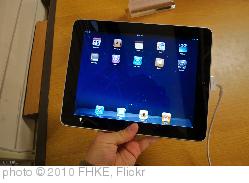The past couple of weeks I took my first steps in reaching out to other teachers for the purpose of doing a Cross-Curricular project. The group I identified was the sixth grade Math teachers. My plan was simple, teams of students would create instructional videos demonstrating how to solve a type of math problem chosen by their Math teacher. The videos would be the Paper Slide because they are simple and quick to create. Next, I met with each teacher to explain the project and see what problem they wanted see their students to explain. Once I had the problems, it was time to organize the students into teams and give them their assignment. I grouped my students in class according to the team they are on to make this organization easier. All I had to do was use Team Shaker on my iPad to pick the teams at random. Once I informed the students of their teams and task to perform they were off.
Imagine my surprise when our school's Math Coach, Kim, stopped me in the hallway telling me she heard about my project and offered her help which I readily accepted. Was I glad for her help because I have trouble adding 2+2 (three right?) and even more grateful when she answered my students' questions I would have had trouble with.
The teams were given storyboard templates for them to design the slides they would use for their video. Kim and I moved around the students offering bits of advice about both the math and design of the slides. The students were also encouraged to show their storyboards to their math teachers to make sure they were correct. The students were very enthusiastic about the project and I had very little trouble keeping them on task. The biggest problem I saw, like their presentations, is they wanted to write every instruction down on the slides. I had to keep reminding them to just pick a problem and write the individual steps in solving the problem on each slide. I further explained one of the team members would explain what is going on while another team member was videotaping and another was working the slides.
My students are almost finished with this project. Once a team tells me they have finished a video to my specifications (it has to be sharable), I come look at it. If there are any problems then I explain that the team needs to try again with the corrections I suggested. When I am satisfied, the videos are to be sent to their Math teachers via Edmodo for their evaluation and I enter my grade in the books. Once we are finished, I plan on going back to the Math teachers to see how things went and how this project could be done better next time.
Was this project effective? One student came up to Kim and I to tell us this project was harder than she thought it would be. We asked why and she replied that that she had to know more to explain how to do a problem than just solving the problem like she normally would. Kim and I looked at each other and smiled. Mission accomplished!
Here is a video on how to create a Paper Slide Video.






















